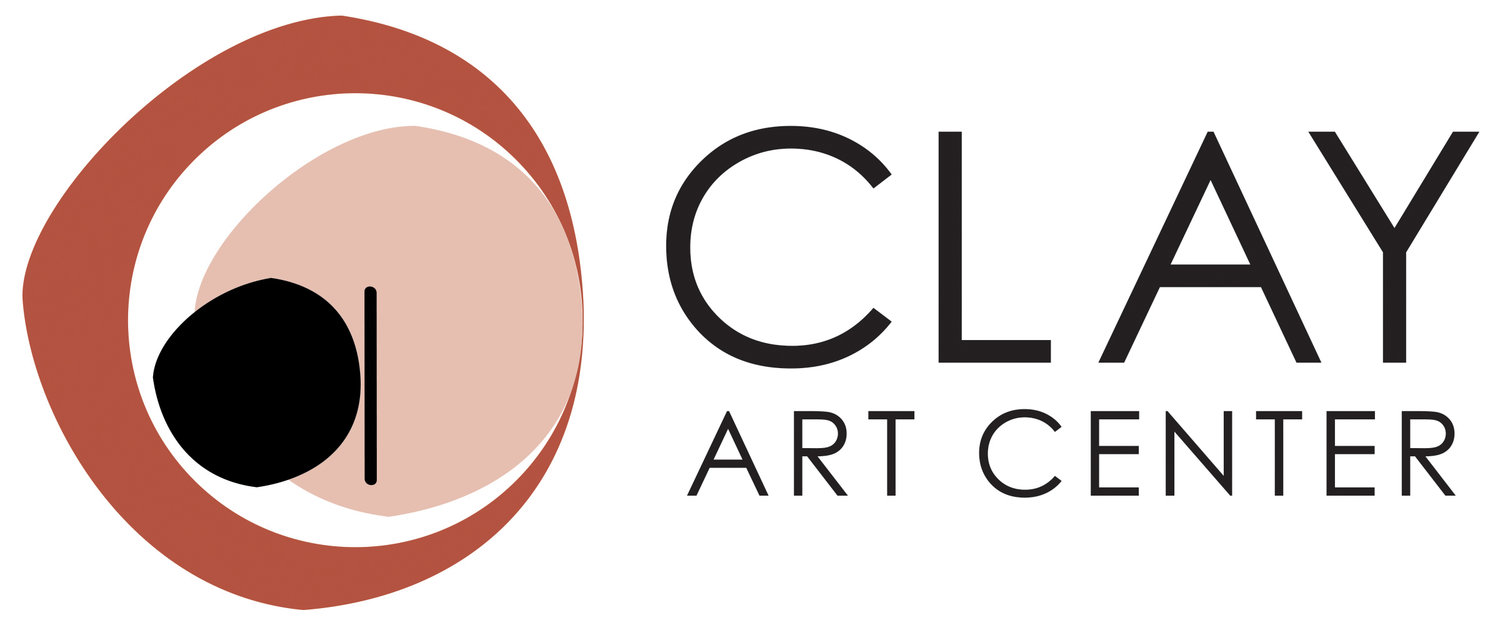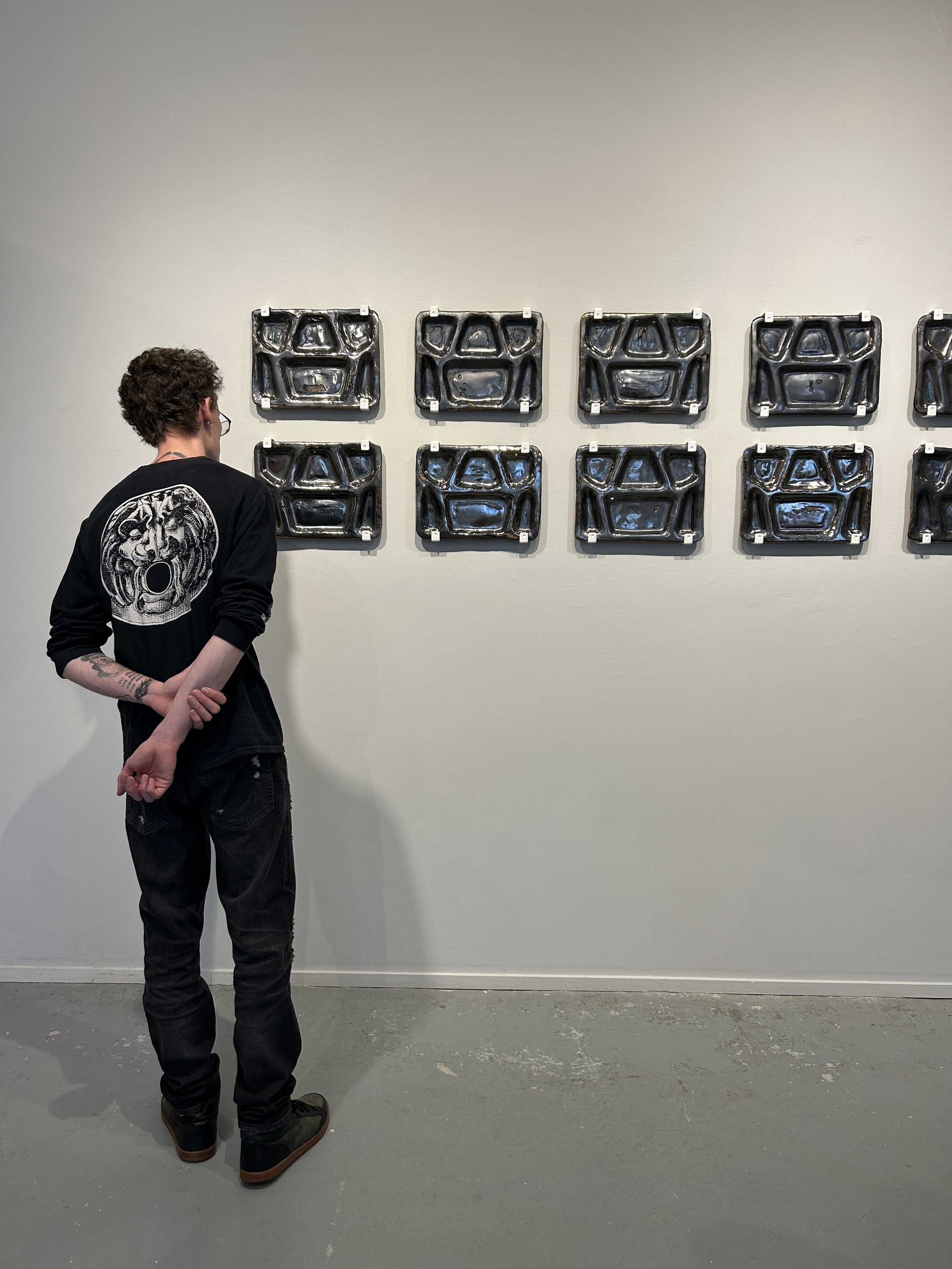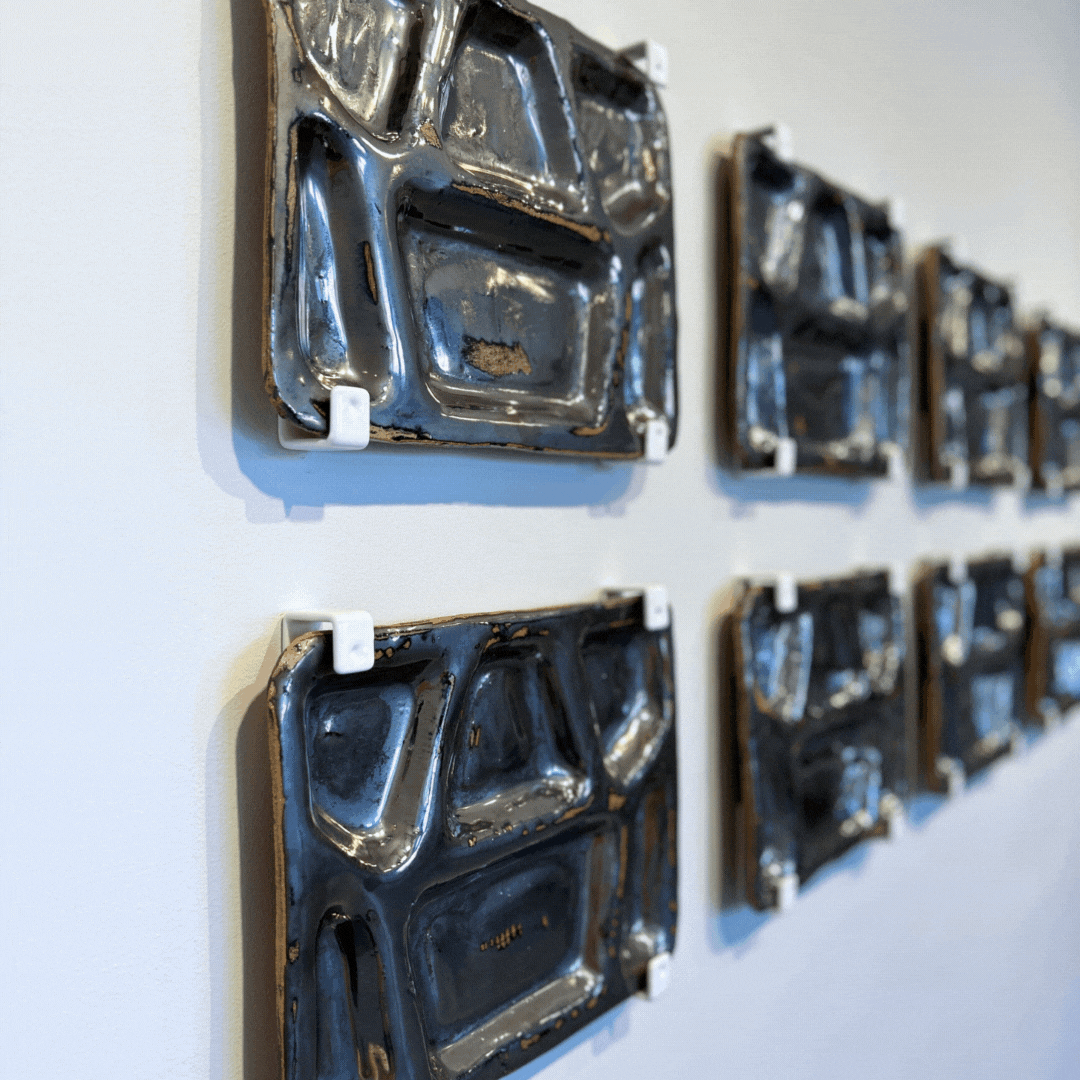Vick Quezada (they/them) is an interdisciplinary artist, explores hybrid forms in Indigenous-Latinx history and the function of these histories in contested lands, primarily in the U.S.-Mexico Border. They work with a variety of mediums: video, performance, sculpture and ceramics. They incorporate found objects (man-made) and natural elements, like dirt, soil, flora, corn and combine them with found objects like bricks, reclaimed trash, chains, cans, and barbed wire.
Quezada has received numerous grants and awards from institutions such as the Robert Rauschenberg Foundation, the Artist Relief Grant supported by Americans for the Arts and Creative Capital, as well as the Massachusetts Cultural Council. Quezada’s residencies include Lost and Found Lab in Cos Cob, CT, the Liberations Residency at MassMoca, and the Vermont Studio Center. From 2019-20 Quezada was the artist-in-residence at the Latinx Project at NYU where they gave public talks, and workshops. In 2018, Quezada was selected as the University of Massachusetts Contemporary Arts - University Massachusetts at Amherst Curatorial Fellow, along with Fred Wilson, who curated the show, “5 Takes On African Art”. Quezada holds a Bachelors from the University of Texas at El Paso and a Masters in Fine Art from the University of Massachusetts at Amherst.
Currently, Quezada lives in New Haven, CT. and is an Assistant Professor of Practice at Hampshire College in Western Massachusetts.
Learn More
Artist Statement
Stainless Remains
Ceramics (mid-fire clay), palladium glaze
2022
10” x 13”
10 pieces
Stainless Remains is part of a massive series of ceramic trays representing institutions throughout the Southwest and beyond currently being developed by Quezada. These ceramic hand pressed stylized stainless trays are replicas of the cafeteria trays found at the Fort Hood Base in Texas. The series, “Remains to be Seen” studies the legacy of settler colonialism, now embedded in borders, land control, and culture, enforced by institutions and policies. This project makes an intervention through sculpture –– ceramic and porcelain cafeteria trays –– to illustrate colonial histories endured by Mestizx-Indigenous people, in addition to demonstrating ancient ceramic traditions used by Indigenous people of Northern Mexico for functional and spiritual purposes.
This exhibition invites critical dialog through clay to highlight Hispanic Heritage Month, and the importance of the culture and contributions of the American Latino community in the US today.





